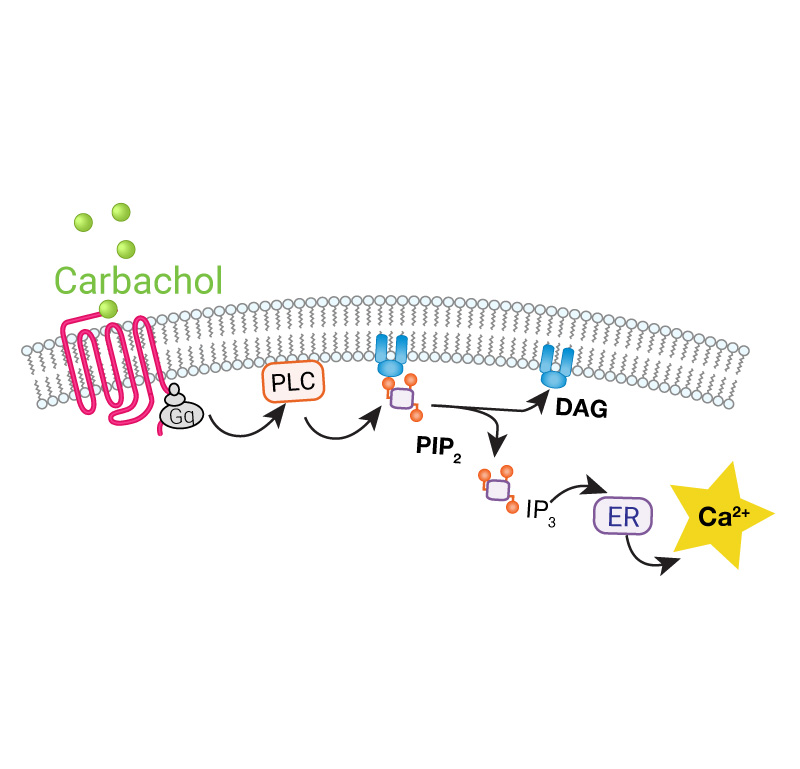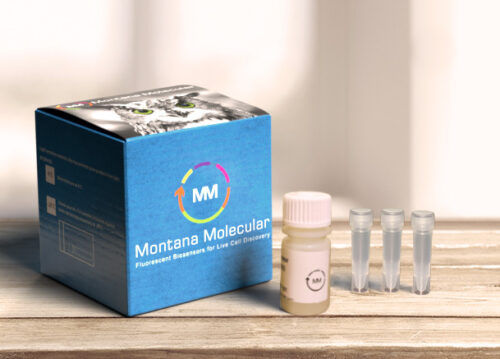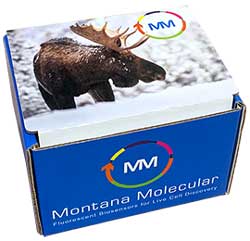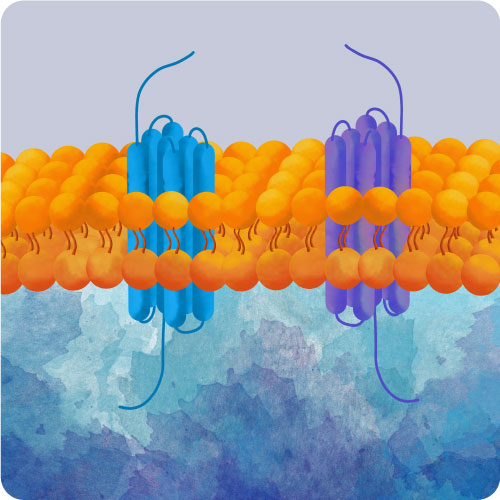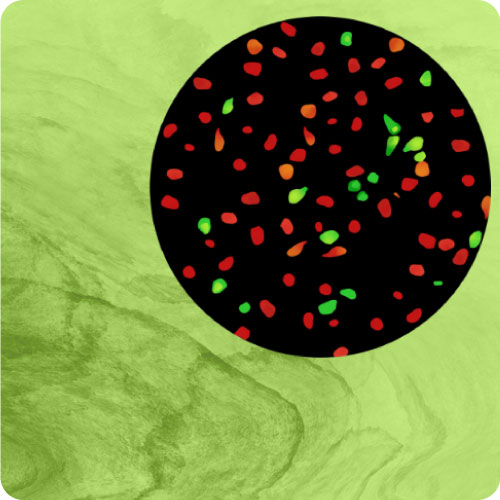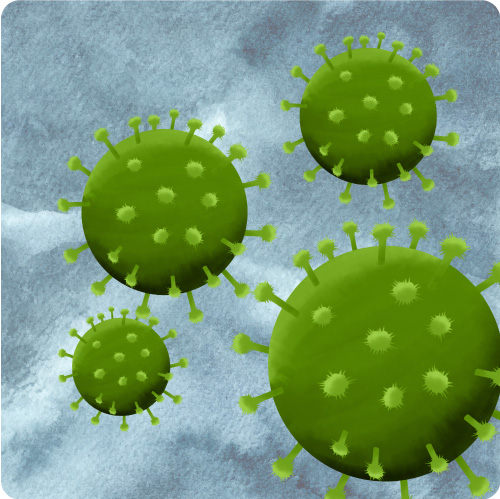
Live Cell Calcium Assay Kit – GECO
Real time kinetic Ca2+ sensor for fluorescent plate readers and imaging systems.
The GECO assays (R-GECO, G-GECO) are fluorescent calcium assays for real time kinetic readouts. This genetically encoded fluorescent sensor is available in both red or green versions, can be expressed in a variety of cell types for plate reader or imaging applications. Developed by Robert Campbell’s lab at University of Alberta, Montana Molecular packages these calcium sensors in viral vectors for robust expression in your favorite cells.
GECO Assay Performance
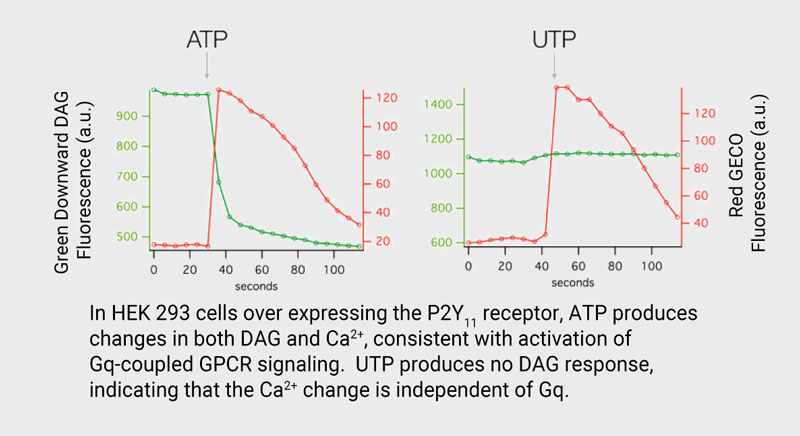
Off the shelf kits include the GECO sensor in BacMam, a BSL-1 viral vector for efficientl delivery to most cell types. Purified BacMam, AAV, Lenti vectors by request.
- Single-channel readout is detectable on standard fluorescence plate readers or imaging systems.
- Robust expression in wide variety of cell types
- Combine with Gs/Gq assay for calcium signaling specificity
- Can be targeted to mitochondria or other microdomains
Bright Red & Green Fluorescent Calcium Sensors
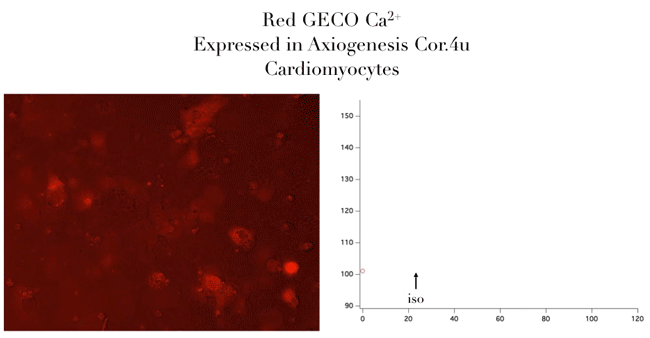
- Genetically encoded for low toxicity
- Real-time kinetic readout
- Robust expression in variety of cell types
Multiplex Ca2+Assays
Easily combine red or green GECO sensors with other GPCR sensors to measure multiple pathways simultaneously
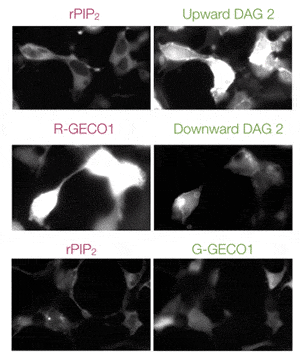
Testimonials
“Assay is working beautifully with cardiomyocytes, showing a strong and immediate response.”
“Expression in human islets is pretty superb, after 18 hours of incubation. An excellent probe!”
Recent Publications
- X. Chen, et al. A PACAP-activated network for secretion requires coordination of Ca2+ influx and Ca2+ mobilization. Molecular Biology of the Cell. May 2024. (bioRxiv)
- C. Amos, et al. Membrane lipids couple synaptotagmin to SNARE-mediated granule fusion in insulin-secreting cells. Molecular Biology of the Cell. December 2023.
- J. Wu, et al. Interaction Between HCN and Slack Channels Regulates mPFC Pyramidal Cell Excitability and Working Memory. bioRxiv. March 2023.
- M. Thomas, et al. Optically activated, customizable, excitable cells. PLOS One. December 2020.
- L. Liu, et al. Diacylglycerol kinases regulate TRPV1 channel activity. Journal of Biological Chemistry. April 2020.
- S. Hoare, et al. A kinetic method for measuring agonist efficacy and ligand bias using high resolution biosensors and a kinetic data analysis framework. Nature Scientific Reports Feb 2020.
- K. Harlen, et al. Live-Cell Assays for Cell Stress Responses Reveal New Patterns of Cell Signaling Caused by Mutations in Rhodopsin, α-Synuclein and TDP-43 Front. Cell. Neurosci.,December 2019
GPCR Biology
Increase your understanding of drug effects and GPCR biology with bright fluorescent assays for Gs, Gi, and Gq signaling in living cells.

